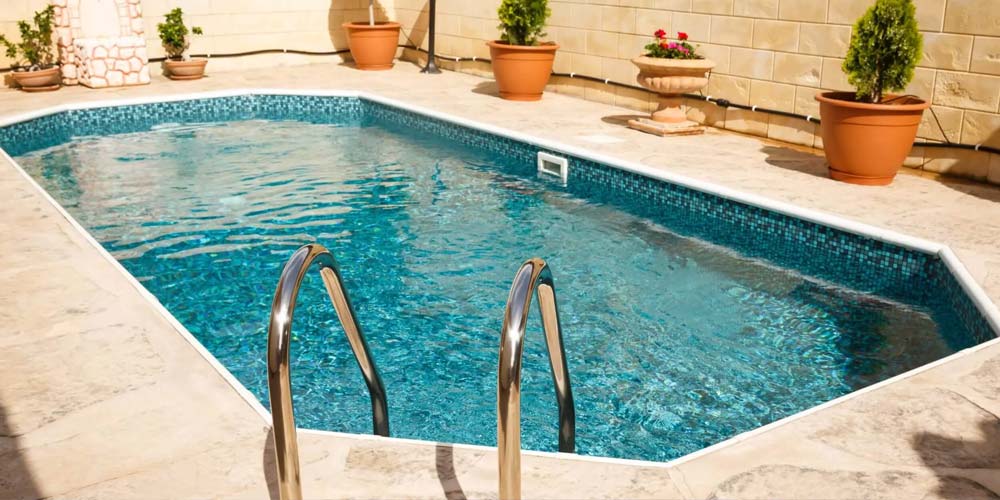The pH of your pool is important for pool safety. pH is a measure of the water’s acid-base balance. If the pH isn’t balanced, problems can occur. The pH range of water is usually 5-9. The lower the number, the more acidic it is, and the higher the number, the more alkaline it is. Pool pH is somewhere in the middle—pool professionals recommend a pH between 7.2 and 7.8 for optimal performance and the cleanest water.
pH Too High
When the pH exceeds 7.8, the water is considered too alkaline. Higher pH reduces the effectiveness of the chlorine in your pool, making it less effective at disinfecting. This can lead to skin health issues for swimmers, cloudy pool water, and scaling of pool equipment.
How to Lower pH
First, test the water’s total alkalinity as well as the pH. Add pH Minus to water. The correct amount of pH Minus depends on the amount of water in the pool and the current pH. The pH reducer usually comes with a guide that takes into account various variables and calculates the appropriate amount of pH reducer to add to the pool.
pH Too Low
When the pH is too low, the pool water is acidic. Acidic water is corrosive.
1. Swimmers will feel the effects immediately because the water will sting their eyes and nasal passages and dry out their skin and hair, causing itching.
2. Low pH water will corrode metal surfaces and pool accessories such as ladders, railings, light fixtures, and any metal in pumps, filters, or heaters.
3. Low pH water can cause corrosion and deterioration of plaster, grout, stone, concrete, and tile. Any vinyl surface will also become brittle, increasing the risk of cracks and tears. All of these dissolved minerals will be trapped in the pool water solution; this can cause the pool water to become dirty and cloudy.
4. In an acidic environment, the free chlorine in the water will lose quickly. This will cause a rapid fluctuating in available chlorine, which will可能导致 may lead to the growth of bacteria and algae.
How to raise the pH value
As with lowering the pH value, Measure pH and total alkalinity first. Then follow the operating instructions to add Pool pH Plus. Until the pool pH is maintained in the 7.2-7.8 range.
Note: After adjusting the pH value, be sure to adjust the total alkalinity to within the normal range (60-180ppm).
In simple terms, if the pool water is too acidic, it will corrode pool equipment, corrode surface materials, and irritate swimmers’ skin, eyes, and noses. If the pool water is too alkaline, it will cause scaling on the pool surface and plumbing equipment, making the pool water cloudy. In addition, both high acidity and high alkalinity will change the effectiveness of chlorine, which will significantly disrupt the pool’s disinfection process.
Maintaining the proper balance of chemicals in the pool is an ongoing process. Any new substances that enter the pool (such as debris, lotions, etc.) will affect the water chemistry. In addition to pH, it is also important to monitor total alkalinity, calcium hardness, and total dissolved solids. With the proper professional products and regular testing, maintaining balanced water chemistry becomes an efficient and simple process.
Post time: Jul-12-2024


